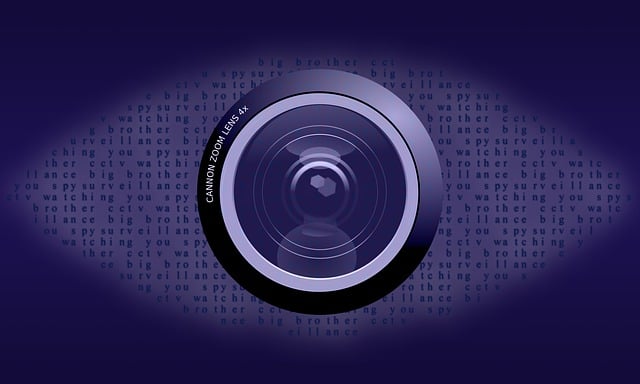Facial recognition technology has transformed remote video security by providing a highly accurate identification system. It analyzes facial features through complex algorithms, breaking down geometry into biometric data for swift identification. This process includes image capture, feature detection, template creation, and comparison, enhancing surveillance capabilities in diverse settings like airports and corporate offices. With real-time individual identification, it offers quicker emergency responses, precise access control, and reduced false alarms, revolutionizing traditional security practices while prioritizing privacy and data protection.
“Facial recognition technology is transforming identification processes, offering unprecedented levels of accuracy and efficiency. This advanced biometric system has evolved from theoretical concepts to practical applications, particularly in enhancing remote video security. This article explores the multifaceted nature of facial recognition, its role in strengthening surveillance capabilities, and its potential benefits and challenges. We will also delve into the future prospects, including its impact on remote video security, as this technology continues to shape our world.”
Understanding Facial Recognition Technology
Facial recognition technology has emerged as a powerful tool in the field of advanced identification, offering unprecedented accuracy and efficiency. This innovative system utilizes complex algorithms to analyze and match facial features captured from digital images or video feeds, such as those obtained from remote video security systems. By breaking down an individual’s unique facial geometry into distinct biometric data points, the technology can identify or verify a person’s identity with remarkable speed and precision.
The process involves several key steps: image capture, feature detection, template creation, and comparison. When integrated into remote video security solutions, facial recognition enhances surveillance capabilities by enabling automated identification of individuals within live feeds or stored footage. This enables more effective access control, improves public safety, and facilitates efficient monitoring in various environments, from airports and border crossings to corporate offices and residential buildings.
Remote Video Security: Enhancing Surveillance
Remote video security has seen a significant boost with the integration of facial recognition technology. This advanced identification method allows for more effective and efficient surveillance, enabling security systems to identify individuals from vast distances in real-time. By analyzing unique facial features, remote cameras can now accurately capture and match faces against databases, enhancing overall safety measures.
The implementation of facial recognition in remote video security offers numerous benefits. It ensures faster response times during emergency situations, facilitates precise access control, and reduces false alarms. This technology is transforming traditional surveillance practices, making it easier to monitor high-risk areas, public spaces, and critical infrastructure while maintaining a higher level of privacy and data protection.
Advanced Identification: Benefits and Challenges
Advanced identification technologies, like facial recognition, offer unprecedented benefits in enhancing security measures across various sectors. One of the most significant advantages is its potential to transform remote video security. This technology enables efficient and accurate identification of individuals from a distance, significantly improving surveillance capabilities. It can be leveraged for access control in smart cities, ensuring only authorized persons enter restricted areas, or aiding in crowd management during events by identifying and tracking specific attendees.
Despite these advantages, challenges such as privacy concerns and potential biases in data sets must be addressed. Accurate facial recognition relies on vast amounts of diverse data to prevent misidentification. Moreover, the technology’s effectiveness can be hindered by factors like lighting conditions, angles, and age changes in individuals. Striking a balance between enhancing security through advanced identification methods and safeguarding personal privacy remains an ongoing debate as we navigate the ever-evolving digital landscape.
Future of Facial Recognition in Security
The future of facial recognition technology in security is promising, especially with advancements in artificial intelligence (AI) and machine learning capabilities. This innovative tool is rapidly transforming how we identify individuals, offering unprecedented accuracy and efficiency in remote video security applications. As AI algorithms become more sophisticated, facial recognition systems can now detect subtle differences in facial features, improving their overall performance and reliability.
In the realm of remote video security, facial recognition technology enables automated and real-time identification, making it an invaluable asset for surveillance systems. This advancement ensures that potential threats or unauthorized access are swiftly detected, allowing security personnel to respond promptly. With its ability to process vast amounts of data and learn from new inputs, facial recognition technology is set to play a pivotal role in enhancing security measures across various sectors, including public spaces, critical infrastructure, and corporate environments.
Facial recognition technology has evolved from a speculative concept to an integral part of modern security, particularly in enhancing remote video surveillance. As we look ahead, this technology promises to revolutionize identity verification across various sectors. However, it also presents ethical and privacy challenges that must be addressed for widespread adoption. Balancing these considerations will be key to unlocking the full potential of facial recognition while ensuring its responsible use in our digital future. Remote video security is poised to become more sophisticated, offering enhanced safety and a deeper level of identity verification.
